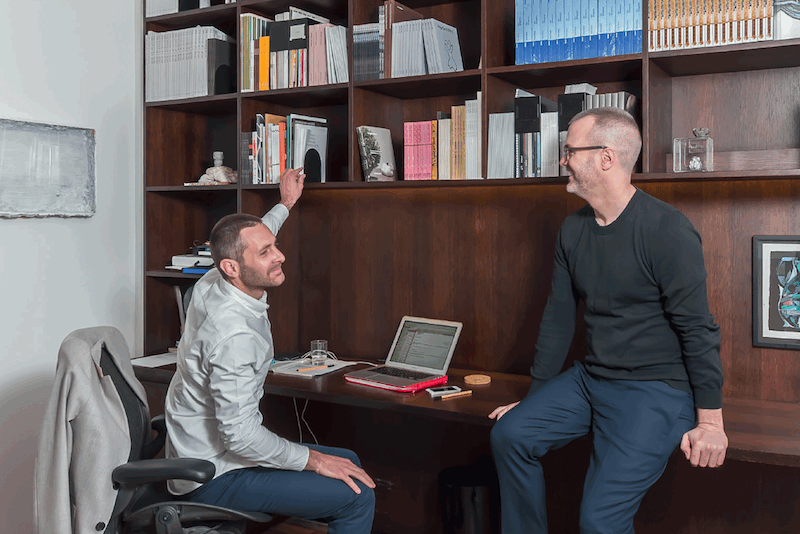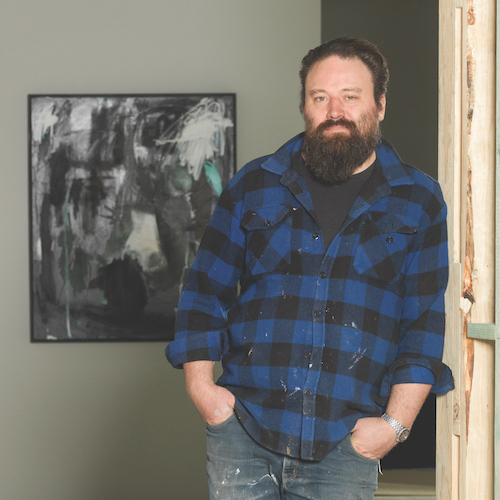Michael Lett: Ahead of the curve
Michael Lett gallery has a surprising approach to running their pre-eminent New Zealand space.
Words: Mark Amery
Photography: Kallan MaCleod
At Auckland Art Fair the Michael Lett Gallery stand was given over to Eve Armstrong’s work Trading Table. Rather than the exchange of money for art, the artist facilitated the trade of items and services between people. Fair-goers became part of the work. Previously produced independently by Armstrong, in this new context it proved dynamic and enormously popular. “As well as being a critically engaging work,” says Lett, “with the fair being all about trade we thought it would be interesting to present something that allows a very direct engagement with an artwork.”
Ambition and bold out-of-the-box steps have marked Michael Lett’s 13 years in the business. After working with Auckland’s Gow Langsford gallery, Lett opened up his own space with artist Michael Parekowhai as his headline act.
Ever strategic, it seems, Lett is good at surprise – with diverse artists and projects of excellence. “Ruthless’ some have said to me, yet testament to the gallery’s energy are the now long commitments of artists who’ve had significant success: Parekowhai, Simon Denny, Jacqueline Fraser, Shane Cotton, artist collective et al, Seraphine Pick and Hany Armanious to name a few. Artists who have often shared with the gallery a similar smart, sharp attitude.
Michael Lett the business is now two people. Andrew Thomas joined as co-director a couple of years ago. Thomas had worked with Lett since returning from working at London’s White Cube Gallery six years ago. Previously he was familiar as dealer Hamish McKay’s right hand man.“I was looking for someone to stand along-side,” comments Lett. “A person who was as invested in the programme and the artists as I was – and I certainly found that person.
Simply put, we complement each other.” Like any gallery, Thomas believes the big thing that distinguishes them is the unique mix of artists. But he goes further, highlighting the gallery’s confidence and awareness of its reputation. Lett adds, “I hope people might associate us with having a certain ambition, a spirit of generosity, perhaps an element of surprise, and a light-footedness in our approach – great things can happen quite quickly here.
”Key has been the inroads made by left for artists internationally. In New Zealand, galleries like Hamish McKay and Gow Langsford had led the way in attending art fairs. But for a while Lett was the New Zealand gallerist consistently showing at three to four fairs a year, he says. Now, he feels he doesn’t have to: many more artists are moving internationally and he feels able to focus closer to home. Hong Kong’s Art Basel is now a key focus. “I think things have sharpened up a little in relation to how people view the Asian-Pacific region. It is clear that the global art audience is shifting a little closer to us.”
Like Gow Langsford, Michael Lett has also been bold in the representation of non-New Zealand artists in the local market, notably Martin Creed. “This is something that’s shifted. When we make a show with Martin Creed for example, we’re in a direct conversation with the artist. He treats us just as seriously as his European or American galleries, and this is evident in the projects we make” Then there’s the boldness of working with an artist who had previously practiced outside the market entirely: the seminal post-object art figure Jim Allen. Lett made a smart strategic move in capitalising on renewed public gallery interest in Allen’s work, consistently supporting his reworking of 1970s performance works from 2006 on. Allen is now 94.
“I simply try my very best for the artists I work with. Outside of that I am just an enthusiastic fan. I really find myself drawn to an eclectic mix of people, and I’m lucky enough that a number of those people have chosen to work alongside the gallery. All of these things are very personal to me.” When I ask Lett which other Australasian galleries he’s looked up to, Darren Knight, Hamish McKay, Sue Crockford and Sarah Cottier come quickly. “All these people were incredibly kind to me.”
He tells the story of going to Sydney as a “spotty teenager” calling up Sarah Cottier, and her opening up for him and making him a cappuccino. He bought a Julian Dashper. “Those kind of connections have been the building blocks of my interest in working with artists. How you might, in a strange way be of service to people. I don’t always succeed but – as I always say – we try our very hardest to be that type of gallery where, if you’re interested, we’re as equally invested in you.”
This article was originally published in Art Collector issue 78, OCT-DEC 2016.








